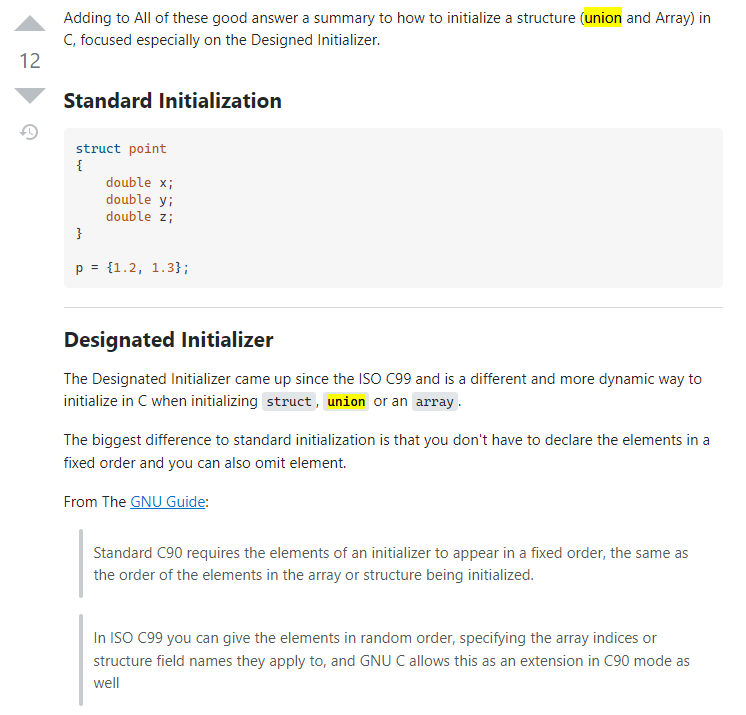定义
struct MY_TYPE
{
int first;
double second;
char* third;
float four;
};
方法一:标准方式 (ANSI C89风格 Standard Initialization)
struct MY_TYPE foo = {-10,3.141590,"method one",0.25};
需要注意对应的顺序,不能错位。
方法二:逐个赋值
struct MY_TYPE foo;
foo.first = -10;
foo.second = 3.141590;
foo.third = "method two";
foo.four = 0.25;
因为是逐个确定的赋值,无所谓顺序啦。
方法三:指定初始化(ANSI C99 风格,同样适用于union,array)
这种方法类似于第一种方法和第二种方法的结合体,既能初始化时赋值,也可以不考虑顺序;
struct MY_TYPE foo = {
.second = 3.141590,
.third = "method three",
.first = -10,
.four = 0.25
};
C99标准新增指定初始化(Designated Initializer),即可按照任意顺序对数组某些元素或结构体某些成员进行选择性初始化,只需指明它们所对应的数组下标或结构体成员名。
该方法在Linux内核(kernel)中经常使用,FFmpeg中也大量出现。
方法四:指定初始化的另一种风格(ANSI C99风格,或称C++风格)
这种指定初始化风格和前一种类似,网上称之为C++风格,类似于key-value键值对的方式,同样不考虑顺序。
struct MY_TYPE foo = {
second:3.141590,
third:"method three",
first:-10,
four:0.25
};

参考:
https://blog.csdn.net/ericbar/article/details/79567108
https://stackoverflow.com/questions/330793/how-to-initialize-a-struct-in-accordance-with-c-programming-language-standards